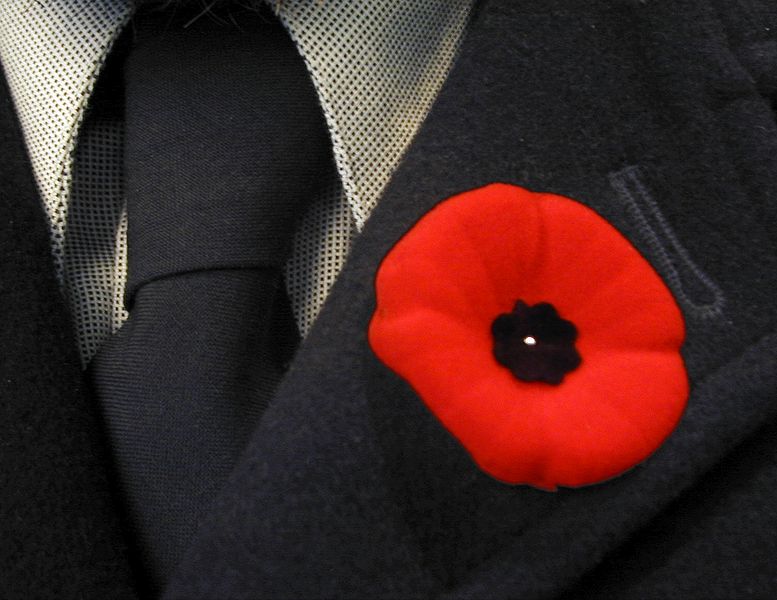Right after Halloween and just as every store is switching from its fall motif to Christmas-themed displays, most Canadians adorn the red poppy until November 11.
The poppy, crystallized as a symbol of war and remembrance from John McCrae’s poem In Flanders Fields, is worn by most Canadians for a few weeks leading up to November 11.
Most Canadians, except me.
Growing up, I was deeply involved in Remembrance Day ceremonies in my hometown. Twice, I went to Holland to sing at Remembrance Day ceremonies. I spoke at Legions on the importance of remembrance as being necessary to peace.
But, as the Canadian government has demonstrated its support for foreign wars, the symbol of the poppy has been hijacked. While it remains a symbol of peace and remembrance for many, it has also become a symbol of support of Canada’s current war ambitions.
Wrapped together with the yellow ribbon and a maple leaf, the poppy symbolizes a great myth: that there exists “just war” and that, through war, Canadians have been granted their freedom. Canada has been engaged in such a war for a decade, in Afghanistan.
When I see billions of dollars spent on fighter jets, the same amount of money that could eliminate tuition fees for all Canadian college and university students, I question what exactly we are remembering.
When I see veterans dying as a result of suicide, that Canadians are coming home with post-traumatic stress disorder and are being deserted by the government that sent them to Afghanistan, I question what exactly we are remembering.
When I see statistics of the quality of life in Afghanistan or the rise in civilian deaths since the invasion in 2001, I question what exactly we are remembering.
Because, if we truly meant that we supported an end to all wars when we wear our poppies, surely Canadians could prevent our government from marching toward war. If our desire to remember led to a stated political will to end war, Canadian troops would have never been sent to Afghanistan in the first place.
The red poppy has instead become so normalized that it’s simply something that we wear. We leave them on our sun visors in our cars. We lose them. We buy others. We say we remember but we don’t do what’s next to turn our remembrance into action.
Remembrance isn’t enough to stop war.
In 1933, in England, the Cooperative Women’s Guild started to distribute white poppies as symbols of peace. Rather than glorify and honour the dead of one particular country, the white poppy commemorates all war dead and calls for and end to all war.
The Peace Pledge Union continues to distribute these white poppies and, in 2005, actually came to an agreement with the British Legion on distributing the white poppy. In Canada, many pacifist and anti-war organizations make their own white poppies and distribute them in time for Remembrance Day.
Remembrance Day remains a political public holiday that, for me, is an important time to talk about Canada’s role in war today.
My white poppy has turned a little grey as I wear it on my jacket year-round. But wearing a poppy isn’t enough. All Canadians who support peace, whether they wear a white poppy, a red poppy, a poppy with a fleur-de-lys in the centre or nothing, must actively oppose any government agenda that seeks to send more Canadians to participate in foreign conflict.
Otherwise, wearing a poppy is an empty gesture, a socialized custom that has become as normal as dressing up for Halloween.
This post originally appeared at the Huffington Post



